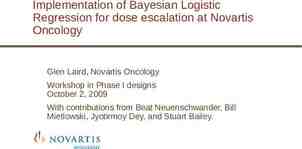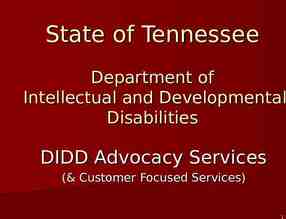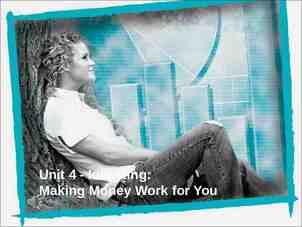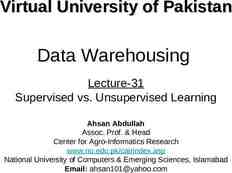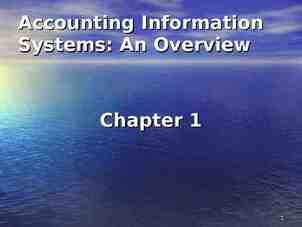SMOOTH OPERATOR: How to Be a Safe Driver Around Pedestrians
23 Slides4.53 MB

SMOOTH OPERATOR: How to Be a Safe Driver Around Pedestrians and Bicyclists For Municipal Drivers Amy Watkins, MPH Watch for Me CT Program Coordinator

Watch For Me CT Watch for Me CT is a comprehensive program aimed at reducing the number of injuries and fatalities as a result of traffic crashes involving pedestrians and bicyclists in Connecticut.

In Connecticut In Connecticut, around 1,500 pedestrians and 550 bicyclists are hit by cars each year. Of those, about 60 pedestrians and 5 bicyclists die due to their injuries.

Quiz Show: Testing Your Knowledge Q: What is the most dangerous time of the day for pedestrians? A: Most crashes involving pedestrians happen between 3 and 7 p.m., with the peak at 6 p.m. This corresponds with evening rush hour when traffic is heavier. In late fall and early winter, rush hour occurs at dusk when lighting is low. Q: Who is more likely to be killed as a pedestrian: men or women, older or younger people? A: Men have a much higher probability than women of being killed in a crash. They are also more likely to be the drivers behind the wheel in pedestrian crashes (52% of the time). The most vulnerable of our population, the oldest and youngest, are most often affected. Pedestrian victims are most likely to be between 0-15 and over 64. Q: What impact does lighting play? A: Pedestrians are more likely to be killed in a crash in dark conditions than in lighter ones. Q: When do most bicycling crashes occur? A: Nearly half of all crashes involving bicycles occur in the summer months, between June and September.

Not My Bumper: Driving Safely Near Pedestrians and Bicyclists So how can we reduce the chance we will be involved in a conflict with a pedestrian or bicyclist? First, know the laws: A crosswalk does not have to be painted to be a crosswalk. A crosswalk is the continuation of the sidewalk/curb across the roadway to the other side. 3-foot passing law: Keep at least 3 feet between you and a bicyclist or pedestrian. It is legal to cross the double yellow line to pass if there is no oncoming traffic and it is safe to do so. Bicyclists may be in the lane! Bicyclists traveling on roadways have the same rights and responsibilities as motorists.

Driving Safely Near Pedestrians and Bicyclists There are things you can do to reduce the chance of being involved in a crash: Prepare yourself Anticipate hazards Think and look ahead Keep your options open Manage the risk

Driving Safely Near Pedestrians and Bicyclists Prepare yourself Be aware of factors that might impact your driving ability, such as medications, fatigue, alcohol, weather conditions, and poor lighting or visibility. Clean your windows and turn on your headlights for better visibility during rain, snow, or foggy conditions. In snow, brush off your taillights and headlights.

Driving Safely Near Pedestrians and Bicyclists Anticipate hazards Always be ready for the unexpected. Slow down around pedestrians, bicyclists, intersections, and crosswalks. Look out for situations that require extra caution. In heavily congested areas reduce speed to give that added second to avoid striking pedestrians if they dart into the roadway. Do not assume that you have been seen.

Driving Safely Near Pedestrians and Bicyclists Think and look ahead Keep Your Eyes Up: It's tempting to look down over the hood at the center line or at tail lights in front of you. It's much more effective to keep your eyes up and moving. Scan Ahead: Look ahead at least 12 to 15 seconds and move your eyes from sidewalk to sidewalk. Moving your eyes is important because your peripheral vision becomes increasingly ineffective as your speed increases. See the big Picture: By moving your eyes, you get a “big picture” perspective of the traffic environment and your place in it.

Driving Safely Near Pedestrians and Bicyclists Keep your options open Be aware of other vehicles around you and your options to change lanes, slow, or stop if you need to avoid someone. If you are in any doubt about a pedestrian or bicyclists’ movements, cover the brake and reduce your speed.

Driving Safely Near Pedestrians and Bicyclists Manage the risk When you are turning, you may have to wait for a gap in traffic. While you are watching for that gap, people may have moved into your intended path. Make sure that you shoulder check before turning. Pedestrians and bikes may be in your blind spot. Steer and brake smoothly if you need to avoid someone. Jerking the steering wheel or slamming the brakes will only make matters worse if you lose control. Look behind you before you back up!

Applying What We Know January 2015: Connecticut A runner died after being struck by a snow plow in Connecticut, according to police. A town resident was jogging along the road when a plow truck struck him. The resident was transported to the hospital, where he was pronounced dead. The road was slushy and icy, and fog limited visibility at the time of the incident. It is believed that the resident came out into the travel lane to avoid some of the snow and ice that was built up in the road, at which point he entered the travel path of the plow. What contributed to this crash? What could the driver of the plow have done to reduce the chance of a crash?

Let ‘Em Walk, Let ‘Em Live: Avoiding Conflicts With Pedestrians Always slow down when passing pedestrians, especially children – they may not realize how long it takes for a truck to stop. Once you see a pedestrian, anticipate and predict what they MAY do, and be prepared to respond as needed. Don't assume that pedestrians see you or that they will act predictably. They may be physically or mentally impaired, or distracted by headphones, cellphones, etc. Watch out for “hidden pedestrians” behind snow banks and other visual obstacles – especially children and people using wheelchairs and scooters.

Avoiding Conflicts With Pedestrians Be particularly attentive at night. Many pedestrians unwisely choose dark clothing that makes them difficult to see. If you are able, make eye contact with pedestrians. Be careful near bus stops or taxi stands – passengers might suddenly decide to cross the road. Be on the lookout for small children, especially around schools and in neighborhoods where children are active.

Crosswalk Tips When you stop for a pedestrian in a crosswalk, stop well back so that drivers in the other lanes can also see the pedestrian in time to stop. Don’t block the crosswalk when waiting for the light or to make a turn. Never pass a car stopped at a crosswalk. Cars may be stopped to allow a pedestrian to cross. Yield to pedestrians when turning if they have the “walk” sign. Concurrent phasing

Crosswalk Tips When you are stopped, watch for vehicles coming from behind you in other lanes that may not see the pedestrian. Honk your horn to alert the pedestrian if you think that the other driver isn’t stopping. If a pedestrian is blind (using a white cane or walking with a guide dog), stay stopped until they are safely off of the road. Don’t stop mid-block to invite pedestrians to cross. Other drivers don’t expect this and may either not stop for the pedestrian or hit you from behind.

Applying What We Know January 2018: California A city employee was driving a large sewage maintenance truck that struck a woman who was crossing the street in a crosswalk. As source said the narrow, often congested streets may have made it difficult to see for both the driver and the pedestrian. The victim was pronounced dead at the scene. Witnesses told investigators that the vehicle was going at about 15 mph. The driver of the vehicle is cooperating with investigators. They say there is no indication the driver broke the law. What contributed to this crash? What could the driver of the truck have done to reduce the chance of a crash?

Two Wheels, Same Road: Driving Safely Around Bicyclists Like drivers, cyclists must also follow the regulations for road users. They are sometimes not permitted to ride on the sidewalks and are required to use the roadway. Be prepared for cyclists to take the lane, it’s their right if they need it, as in cases where the shoulder is hazardous or the cyclist is taking a left. Here are some tips for interacting with bicyclists on the road

Driving Safely Around Bicyclists Manage your space effectively and don't crowd cyclists particularly as you pass (remember to give 3 feet!) The best plan is to wait until you can move way over into the other lane and not pass closely or squeeze them towards the curb or ditch. Be patient, wait to pass until it is safe. Do not honk your horn, this could startle the cyclist and cause erratic behavior. Always check your blind spot for cyclists. Be aware of cyclists approaching and passing your truck at intersections – they do not know they are in your blind spot. If you have a trailer, they might not know it will not follow behind the truck on a turn.

Applying What We Know November 2017: Pennsylvania Philadelphia police have identified the bicyclist who was killed when she was hit by a trash truck in Center City. The victim is a 24-year-old Emily Fredricks. Fredricks was struck by a garbage truck turning right during an early morning commute on Nov. 28. Investigators say the victim was lawfully traveling in the bike lane when she was struck. Officials say the driver was wearing earbuds and looking down at paperwork when he struck Fredricks. “The internal cab video that we have showed, he didn’t check the mirrors immediately before the turn or even during the turn — he actually glanced down at a piece of paper or documents on a console, that was one. Two, he didn’t use his turn signal. Three, he didn’t yield to the bike lane that was alongside of him on the right hand side,” explained a Homicide Unit supervisor. Credit: CBS3 What contributed to this crash? What could the driver of the truck have done to reduce the chance of a crash?

Walk This Way: Keep Yourself and Your Family Safe The quick and dirty: Teach your kids pedestrian safety from a young age and be a good example for them. Use the crosswalk. If there is no crosswalk, yield to vehicles. Look both ways before crossing. If sidewalks are not available, walk on the left (facing traffic) along the left shoulder as far as possible. Wear light colored or reflective clothing or use lights when walking or biking at dusk or night. When cycling, wear a helmet, ride on the right with traffic, signal turns, and obey all traffic signals including red lights and stop signs. If you work near moving vehicles of any type on or off the highway, wear your Personal Protective Equipment (PPE) and avoid turning your back on moving vehicles.

Practical Challenge: This week, look for pedestrians and bicyclists and make sure that you yield when required to. Notice how many close calls there are between vehicles and pedestrians/cyclists and make sure that you are not one of them.

Questions? Special thanks to Thomas J. Roy, P.E., Director of Public Works, Town of Simsbury and George Tammaro, Risk Management Services Manager, Connecticut Interlocal Risk Management Agency. www.WatchForMeCT.org Amy Watkins, MPH Program Coordinator, Watch for Me CT Connecticut Injury Prevention Center, Connecticut Children's Medical Center 860.837.5344 [email protected]


